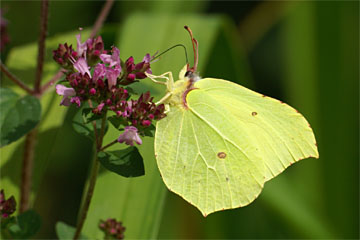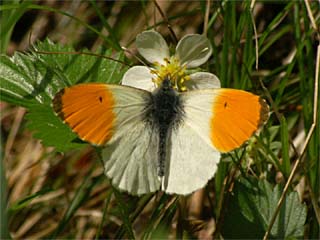Martin KonvickaMartin Konvicka has analysed the distribution of butterflies in terms of area and altitude in  Czechia
Czechia Czechia Konvicka, 2003 - Uphill shifts in distribution of butterflies in the Czech Repulic: effects of changing climate detected on a regional scale.
Czechia Konvicka, 2003 - Uphill shifts in distribution of butterflies in the Czech Repulic: effects of changing climate detected on a regional scale.
His research was based on a butterfly atlas in which the area of  Czechia
Czechia Czechia was divided into 675 cells. 151,451 records in the form of sightings, data from literature references and collections were included for 161 species from the entire 20th century. Data from 624 cells after 1950 were used for the analyses.
Czechia was divided into 675 cells. 151,451 records in the form of sightings, data from literature references and collections were included for 161 species from the entire 20th century. Data from 624 cells after 1950 were used for the analyses.
As a result, the  Camberwell BeautyNymphalis antiopa (Linnaeus, 1758)Mourning CloakCamberwell Beauty was one of 15 species whose distribution increased in relation to altitude above sea level in the second half of the 20th century.
Camberwell BeautyNymphalis antiopa (Linnaeus, 1758)Mourning CloakCamberwell Beauty was one of 15 species whose distribution increased in relation to altitude above sea level in the second half of the 20th century.
Cells in which the  Camberwell BeautyNymphalis antiopa (Linnaeus, 1758)Mourning CloakCamberwell Beauty was sighted or caught (624 cells = 100%):
Camberwell BeautyNymphalis antiopa (Linnaeus, 1758)Mourning CloakCamberwell Beauty was sighted or caught (624 cells = 100%):
| Period | Cells | Percent |
|---|---|---|
| 1951-1980 | 247 | 39,58% |
| 1980-1994 | 345 | 51,11% |
| 1995-2001 | 212 | 31,40% |
Average altitude in the mean value:
| Period | Altitude |
|---|---|
| 1951-1980 | 485 metres |
| 1995-2001 | 525 metres |
 BrimstoneGonepteryx rhamni (Linnaeus, 1758)Common BrimstoneBrimstone
BrimstoneGonepteryx rhamni (Linnaeus, 1758)Common BrimstoneBrimstone
Brimstone (Gonepteryx rhamni) sucking on Oregano (Origanum vulgare)
[Male]
 Orange TipAnthocharis cardamines (Linnaeus, 1758)anthocharis cardamineaOrange Tip
Orange TipAnthocharis cardamines (Linnaeus, 1758)anthocharis cardamineaOrange Tip
Orange Tip (Anthocharis cardamines)
[Male]
Male Orange Tip near Blue Lake at Kandersteg.
In absolute terms, the  Camberwell BeautyNymphalis antiopa (Linnaeus, 1758)Mourning CloakCamberwell Beauty has seen a decline in populations at lower altitudes and stable populations at higher altitudes. The
Camberwell BeautyNymphalis antiopa (Linnaeus, 1758)Mourning CloakCamberwell Beauty has seen a decline in populations at lower altitudes and stable populations at higher altitudes. The  BrimstoneGonepteryx rhamni (Linnaeus, 1758)Common BrimstoneBrimstone and the
BrimstoneGonepteryx rhamni (Linnaeus, 1758)Common BrimstoneBrimstone and the  Orange TipAnthocharis cardamines (Linnaeus, 1758)anthocharis cardamineaOrange Tip have experienced the same development.
Orange TipAnthocharis cardamines (Linnaeus, 1758)anthocharis cardamineaOrange Tip have experienced the same development.







